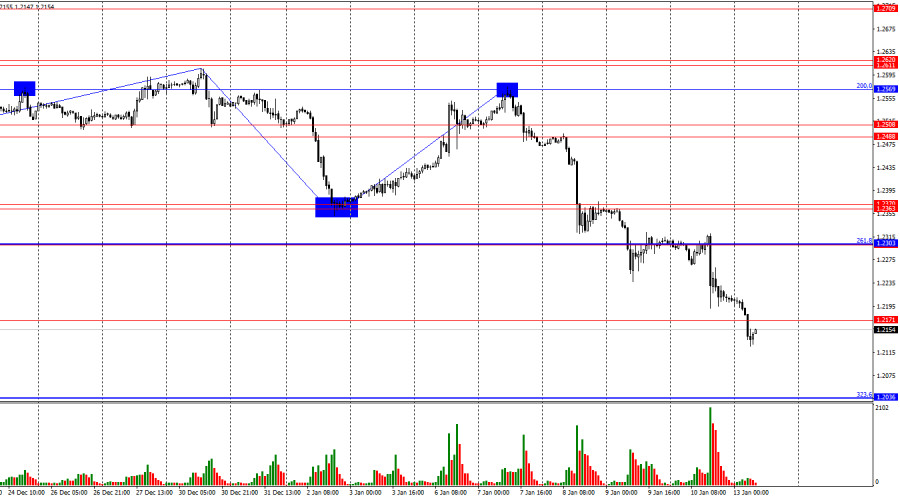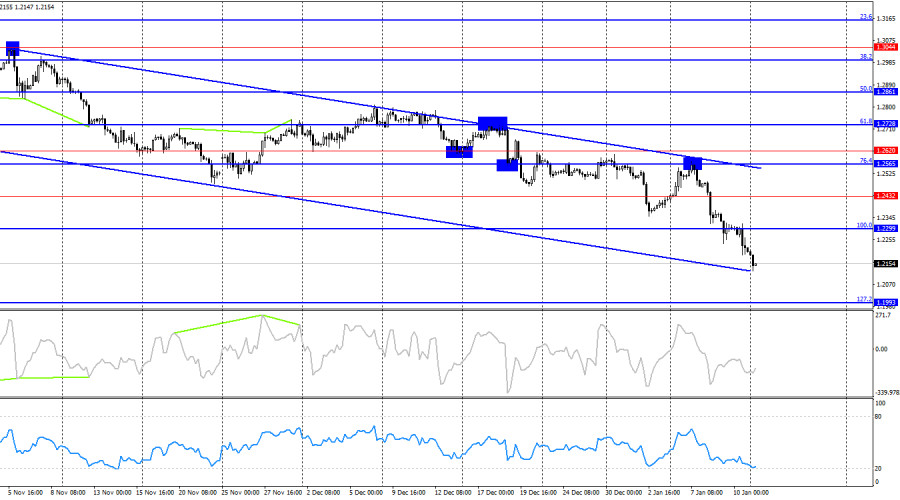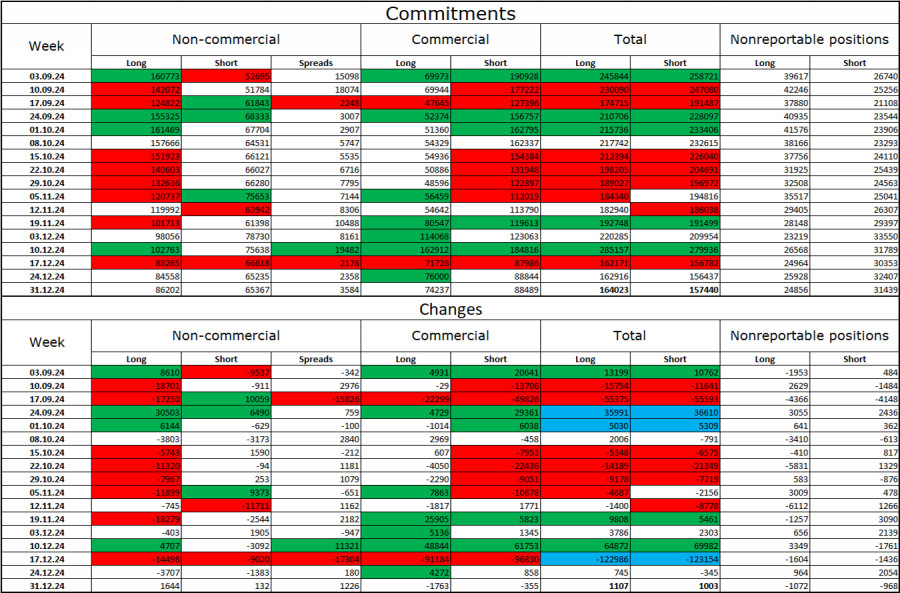আরও দেখুন


On the hourly chart, the GBP/USD pair made a vague rebound from the 261.8% Fibonacci corrective level at 1.2303 on Friday and continues its decline. Today, the pair has already broken below the 1.2171 level, and the movement persists toward the next Fibonacci level at 323.6% — 1.2036. While Friday's drop was driven by fundamental data, Monday's continuation raises questions, but there is a clear answer: the current trend is bearish and very strong.
The situation with the waves leaves no doubts. The last completed upward wave failed to break the peak of the previous wave, while the current downward wave has broken the previous low. Thus, the bearish trend continues, and there is no question about it. To conclude the bearish trend, the pound must rise at least to the 1.2569 level and close above it confidently. This scenario is unlikely in the near future.
On Friday, strong US data prompted the dollar's growth and further attacks from bears. However, as mentioned earlier, the decline was not limited to Friday. Today marks the fifth consecutive day of GBP/USD's decline, with traders continuing to buy the dollar without needing new data. The US dollar has plenty of reasons to grow, including a strong economy, a dovish Federal Reserve stance, and the lack of strong catalysts for the pound and euro. Thus, each new drop in the pound or euro should not come as a surprise — the trend is bearish. Monday's trading lacks fundamental news, but early trading suggests that bearish traders are ready to continue their attacks. What could stop them?
On the 4-hour chart, the pair rebounded from the 76.4% Fibonacci corrective level at 1.2565, broke below the 100.0% Fibonacci level at 1.2299, and has been falling since. The pair's close below 1.2299 increases the likelihood of further declines toward the 127.2% level at 1.1993. The downward trend channel highlights the dominance of bears, who are unlikely to lose their grip in the near future. Only a close above the channel would signal a potential strong rise in the pound.
The sentiment of the "Non-commercial" trader category remained virtually unchanged in the last reporting week. The number of long positions increased by 1,644, while short positions rose by 132. Bulls still hold the advantage, but it continues to erode. The gap between long and short positions is now only 21,000: 86,000 long versus 65,000 short.
In my view, the pound's prospects for further decline remain, as COT reports indicate an ongoing strengthening of bearish positions almost every week. Over the past three months, the number of long positions has decreased from 160,000 to 86,000, while short positions have risen from 52,000 to 65,000. I believe professional players will continue to unload long positions or increase short ones, as all potential catalysts for pound buying have already been exhausted. Graphical analysis also supports the pound's decline.
Monday's economic calendar contains no noteworthy events or data. The fundamental backdrop is expected to have no influence on trader sentiment today.
Fibonacci Levels:
You have already liked this post today
*এখানে পোস্ট করা মার্কেট বিশ্লেষণ আপনার সচেতনতা বৃদ্ধির জন্য প্রদান করা হয়, ট্রেড করার নির্দেশনা প্রদানের জন্য প্রদান করা হয় না।


Forex Chart
Web-version

Your IP address shows that you are currently located in the USA. If you are a resident of the United States, you are prohibited from using the services of InstaFintech Group including online trading, online transfers, deposit/withdrawal of funds, etc.
If you think you are seeing this message by mistake and your location is not the US, kindly proceed to the website. Otherwise, you must leave the website in order to comply with government restrictions.
Why does your IP address show your location as the USA?
Please confirm whether you are a US resident or not by clicking the relevant button below. If you choose the wrong option, being a US resident, you will not be able to open an account with InstaTrade anyway.
We are sorry for any inconvenience caused by this message.



